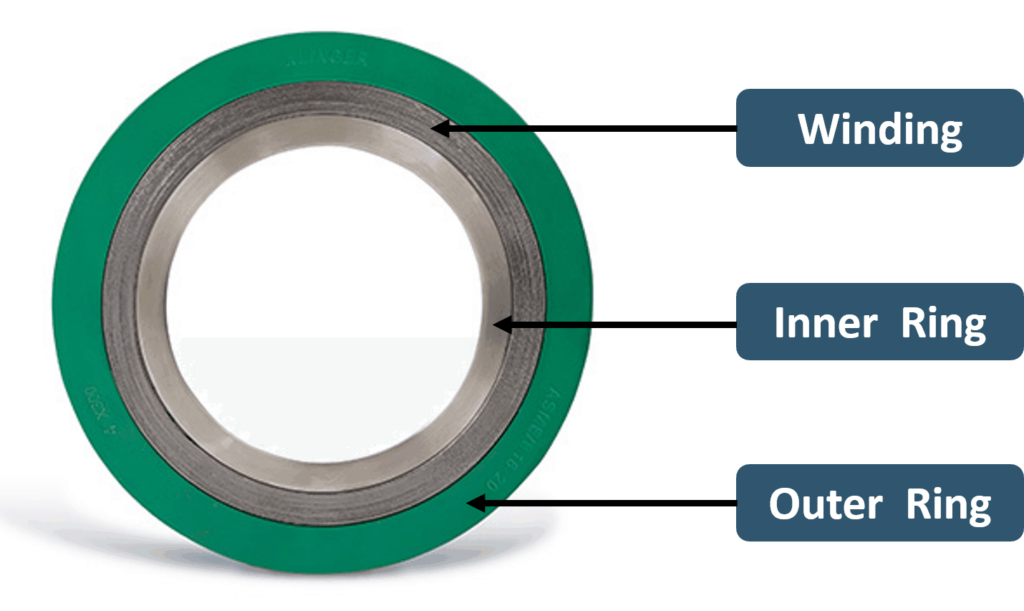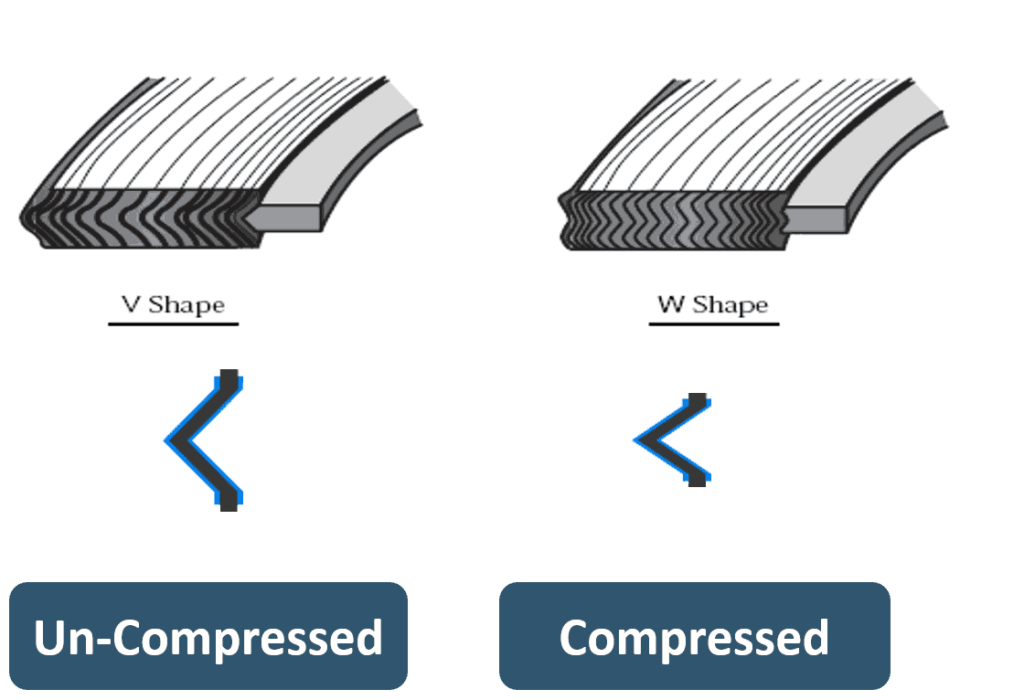Spiral Wound ASME B16.20 & b16.47 Series A&B(in)
Spiral Wound ASME B16.20 & b16.47 Series A&B(in)
What is Spiral Wound Gasket?
Why did we call it SWG? SWG is a short form of Spiral Wound Gasket.
These gaskets are fabricated from thin metal strip sandwiched between layers of non-metallic filler. SWG has alternative spiral layers of thin metal sheet and filler material as shown in the image. Here in the cross-section, the blue layers are of metal, and the black layers are of filler material. As these layers are wounded in continuous spiral forms, these types of gaskets are known as spiral wound gasket.
These gaskets are extremely popular due to the wide variety of available styles and sizes.
SWG can be fabricated of any metal which is available in thin strip and which can be welded; therefore, they can be used against virtually any corrosive medium.
They can be used over the complete temperature range from cryogenic to approximately 1093ºC. This type of gasket can be used in all pressures from vacuum to the standard 2500 pressure class flange ratings.
Relatively low-density Spiral wound gaskets are used in vacuum service whereas extremely high-density Spiral wound gaskets are used in high-pressure service. The density of gasket is nothing but a number of layers of filler and metal strip in the given width of the gasket.
Components of Spiral Gasket
There are three components in the spiral wound gasket.
- Outer Ring
- Winding Material (Filler & Metal Strip)
- Inner Ring

You can see in the image spiral wound gasket. As said, the winding is an alternative layer of filler material and winding material. Winding can be a V-type or W-type. These V or W shape, under pressure it presses against the flanges face and compresses the filling material to provide leak-proof joining.
The filler material can be graphite, PTFE, ceramic or other material depends on the service of the fluid. Spot welding normally secures the inner and outer ends of the strip that wrap the filler material; the gasket is contained loosely in an outer backing ring.
For applications involving raised face flanges, the spiral wound gasket is supplied with an outer ring made from Carbon steel, Stainless steel or other materials such as Monel or Nickel. The outer ring provides the centering capability of the gasket as well as the blow-out resistance of the windings and acts as a compression stop.
Many SW gaskets for critical applications also include an inner guide ring, which gives the gasket a greater resistance to thermal shock, and in the case of vacuum service, it prevents the filler material from being sucked inside the pipe. Inner rings should be used with spiral wound gaskets on male-and-female flanges, such as those found in heat-exchanger, shell, channel, and cover-flange joints.
Spiral wound ring gaskets are also used in tongue-and-groove flanges. When used in this type of flanges there will be no inner and outer metal rings as gasket are fit inside the groove
The image below shows the color codes for winding and filler materials.





